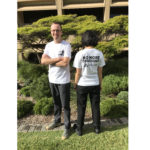Is Being Aggressive Illegal?

An Australian man flying home from Chile last October had an unexpected layover in New Zealand after he was charged with indecent assault and threatening to kill over allegedly becoming drunk and aggressive towards flight staff.
While Qantas has a very clear anti-social behaviour policy, which resulted in the man being taken off the plane and charged, Australia’s legal jurisdictions address aggressive behaviour in a number of ways.
What is aggressive behaviour?
The American Psychological Association defines aggressive behaviours as those which cause or threaten to cause either physical or emotional harm to others.
Aggressive conduct can be either passive or active, or in some cases a combination of both. Passive aggressive behaviours are often harder to identify than active ones, but they have the same intent; being to cause grief and harm to the recipient.
In 1988, psychologist and author Kevin Howells made the distinction that while all acts of violence can be considered aggressive, not all acts of aggression will be violent.
What causes active aggressive behaviour?
Active aggressive behaviours are those which are violent or threaten violence towards another. The threats of violence can be either verbal, or by display of a gesture or weapon. Examples include a person who yells at another, causing them to fear for their own physical safety, or a person who raises a fist or knife at another.
Aggressive behaviours are said to be either learnt or a reaction to high levels of stress or some other situation. Some theorists believe that such behaviours are a combination of both nature and nurture.
Children who grow up in aggressive homes are often trying to make sense of their world through imitation. This will often lead to learnt aggressive, which can cause problems in later life.
Aggressive behaviours can also result from personal insecurities. The insecure person can feel stressed in situations where they feel vulnerable, which can result in aggression, either passive or active.
Mental health conditions may also contribute to the person acting outside their ‘normal’ behaviour. For example, it has been widely reported that patients with dementia often react to situations with aggressive behaviour.
Passive aggression
Passive aggressive behaviours are those which are intended to empower the aggressor, often through words or by ‘playing’ the victim.
This can include situations where the aggressor finds a weakness in their victim, and uses it to gain an ‘advantage’. The advantage can often be traced back to the root of maintaining or gaining power.
Types of passive aggressive behaviours include:
- Giving someone the silent treatment
- Condescending use of sarcasm
- Manipulating events
- Lying
- Cutting someone off from speaking
- Humiliation
The legal implications
Certain types of aggressive behaviour can result in civil action being taken against a person or even criminal charges.
In NSW, aggressive conduct and acts of violence come before the courts through provisions contained in a range of legislation.
Here are some examples:
Common assault
Section 61 of the Crimes Act 1900 (NSW) makes it a criminal offence to assault another person, which includes any action that causes another person to fear immediate and unlawful personal violence.
This means that ‘common assault’ can occur without any touching at all – just causing another person to fear for their immediate safety can be enough.
Examples might include raising your fist against another person or threatening to hurt them while they are near you.
The maximum penalty is 2 years imprisonment if the case goes to the District Court or 12 months if it stays in the Local Court.
Intimidation
A person who is displaying aggressive behaviour may be undertaking what the courts consider to be intimidation. To be charged with intimidation, police must reasonably suspect that you coerced someone to act in a particular way, as well as displayed behaviour that caused them to fear mental or physical harm.
Intimidation often involves threats such as ‘you better let me in or else…!’ or ‘if you do that, you know what’s gonna happen to you’. However, it can also involve coercing someone not to do something eg to stay away from a particular place.
Words are not always necessary in an intimidating situation, and that actions that cause pressure or compliance can be enough for a charge to be laid.
Intimidation is an offence under section 13 of the Crimes (Domestic and Personal Violence) Act 2007. It carries a maximum penalty five years in prison and/or a fine of $5,500 if the case goes to the District Court, or 2 years if it remains in the Local Court.
The charge of affray
Section 93C of the Crimes Act makes it an offence for a person to “use or threaten unlawful violence towards another and whose conduct is such as would cause a person of reasonable firmness present at the scene to fear for his or her personal safety.”
A number of disturbing incidents, such as the Cronulla riots and acts of violence between biker groups, resulted in the NSW Government extending the penalties for affray from 5 to 10 years in 2005.
However, the charge of affray is often used by police for smaller-scale civil disturbances such as pub fights and protests that get out of hand.
Workplace bullying
The NSW Work Health and Safety Act 2011 specifically describes the requirements that employers must abide by in order to provide a safe workplace for employees.
These include preventing and addressing instances where workplace bullying has occurred. Bullying can involve aggressive behaviour and threats.
If an employer fails to provide a safe working environment, they can be sanctioned under the WHS Act 2011 and be fined and charged depending on the severity of the case.
Aggressive behaviour becoming more common?
Examples of aggressive behaviour can be seen everywhere, from motorists screaming at each other to bullying in the workplace.
In today’s stressful world, it is relatively easy to become involved in a verbal altercation, yet even raising your voice at another person could in some cases land you in trouble with the law.
If you’ve become caught up in a situation and face charges from a situation that got out of hand, a criminal defence lawyer who is experienced in dealing with these cases can help.






